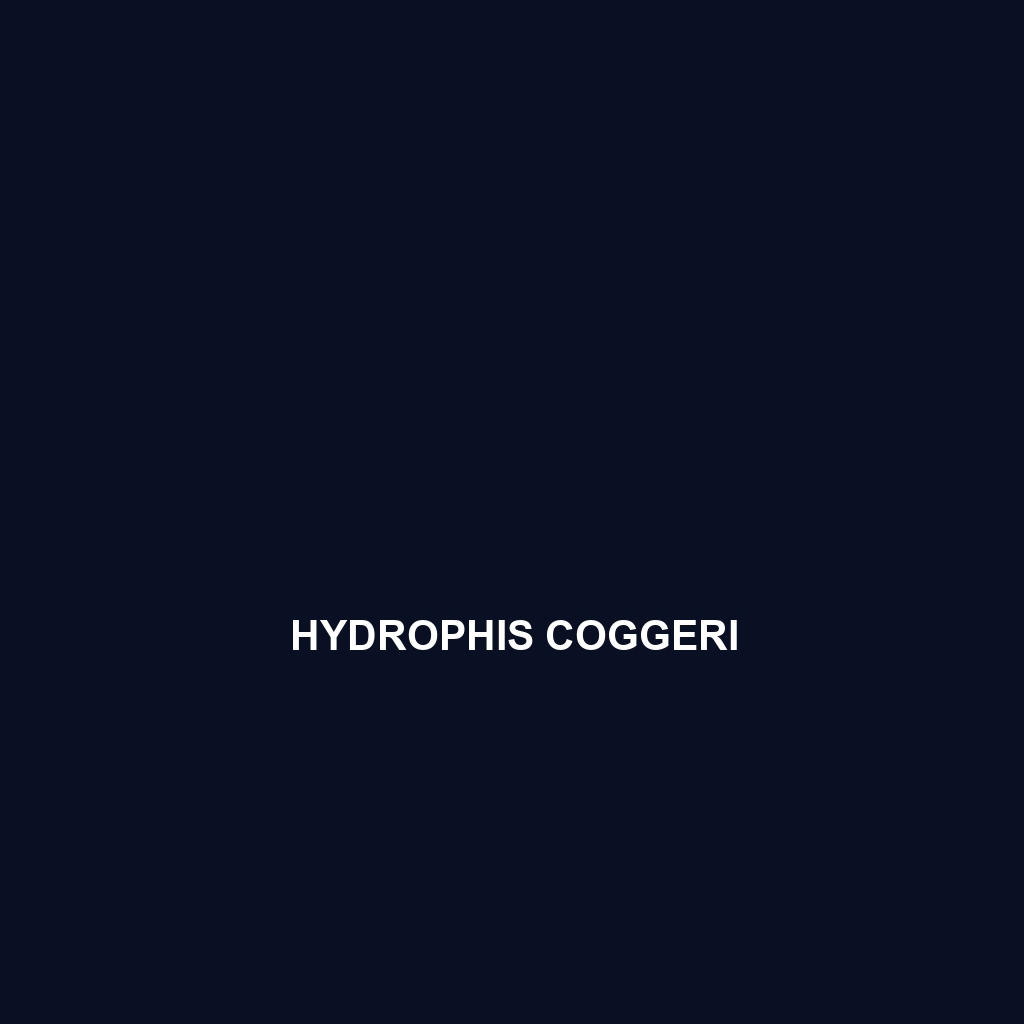Common Name
Hydrophis coggeri
Scientific Name
Hydrophis coggeri
Habitat
Hydrophis coggeri, commonly known as the Cogger’s Sea Snake, is primarily found in the marine habitats of the coastal regions of Australia, particularly in the warm waters off the northeastern coast. This species thrives in a range of environments, including shallow lagoons and coral reefs, where the water is clear and teeming with marine life. The typical climate for Hydrophis coggeri encompasses tropical to subtropical conditions, characterized by warm temperatures and moderate to high humidity levels. These snakes are often seen resting on the sandy bottoms or amidst seagrass beds, showcasing their adaptability to both coastal and open sea environments.
Physical Characteristics
Hydrophis coggeri exhibits distinct physical traits that enable it to thrive in aquatic environments. Adults typically reach a length of 1.2 to 1.5 meters (approximately 4 to 5 feet), though some specimens may grow larger. The body is elongated and cylindrical, equipped with a flattened tail that aids in swimming. The coloration of this species varies, ranging from olive green to brown with darker banding, which provides excellent camouflage against the ocean floor. Unique features include its distinctive small head in relation to its body and its large, prominently placed eyes, adapted for underwater vision. These physical attributes are critical for survival in marine habitats where stealth and agility are vital.
Behavior
The behavior of Hydrophis coggeri is primarily aquatic. This species is known for its diurnal activity, mostly hunting and foraging during daylight hours. Unlike some sea snakes that may exhibit migratory patterns, Hydrophis coggeri tends to remain within a familiar range of its habitat, often returning to the same areas for feeding. Social interactions are limited; however, they can be observed basking together on sunny rocks or submerged branches. Mating rituals occur in the warmer months, and during this time, males may display competitive behaviors to assert dominance over potential mates. Their ability to utilize both underwater and coastal habitats demonstrates a remarkable adaptation to their environment.
Diet
Hydrophis coggeri primarily feeds on marine fish and, occasionally, crustaceans, making it a carnivorous species. Its hunting technique involves ambushing prey, using its excellent vision to locate fish in the clear coastal waters. This species exhibits a specialized method of feeding; it can ingest fish up to half its own body size thanks to its flexible jaw structure. The dietary preference aligns it with other marine predators, helping maintain the ecological balance within its habitat. The efficiency of its feeding habits ensures minimal waste within its ecosystem, playing a crucial role in marine dynamics.
Reproduction
Reproduction in Hydrophis coggeri is fascinating, as this species is ovoviviparous, meaning that females give birth to live young rather than laying eggs. Typically, the mating season occurs in the warmer months, specifically in late spring and early summer. After a gestation period of approximately 6 to 8 weeks, females may give birth to live young, with litters averaging between 4 to 15 snakes. Notable parental behaviors include postnatal care in which mothers may accompany their young to ensure their safety as they learn to navigate their environment. This reproductive strategy allows for a higher survival rate of the newborns in the risk-laden marine habitat.
Conservation Status
The conservation status of Hydrophis coggeri is currently listed as “Least Concern” according to the International Union for Conservation of Nature (IUCN). Although the species does not face immediate threats, ongoing pressures from habitat degradation, pollution, and the impacts of climate change could pose risks in the future. Conservation efforts are necessary to ensure that coastal and marine habitats remain protected. Environmental awareness campaigns and marine protected areas can contribute to the continued survival of this fascinating species.
Interesting Facts
Hydrophis coggeri is not only unique for its aquatic adaptations but also for its remarkable biology. This sea snake possesses a highly effective venom, used primarily to subdue prey, but it is considered not dangerous to humans given its shy nature and preference to avoid confrontations. Interestingly, these snakes are also equipped with the ability to absorb oxygen through their skin, which supplements their breathing while submerged. Moreover, their natural agility and swimming capabilities allow them to escape larger predatory threats, further contributing to their survival in marine ecosystems.
Role in Ecosystem
Hydrophis coggeri plays a vital role in its ecosystem as both a predator and prey. As a marine predator, it regulates fish populations, ensuring a balanced ecosystem in its coastal habitat. This species also serves as a food source for larger marine animals, including sharks and larger fish, thus integrating into the food web. Their hunting habits influence the behavior and distribution of their prey, contributing to the overall health of the marine environment. Effective predator species, like Hydrophis coggeri, are crucial in maintaining biodiversity and ecological stability within their habitats.
